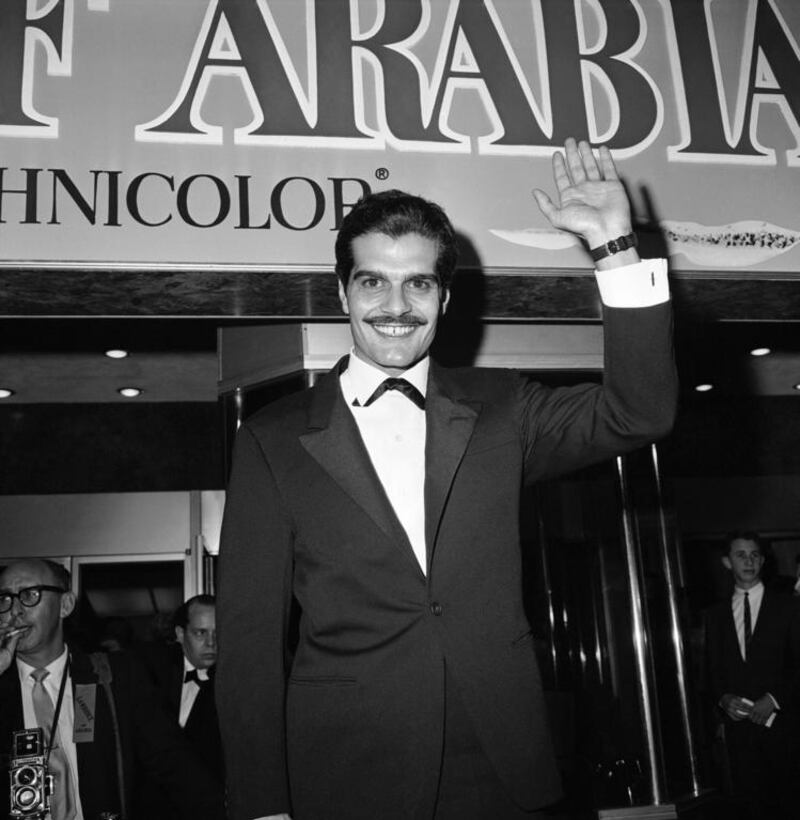It has been called the “golden age of Arab cinema” – that period from the late 1940s to 1960s, when Arab actors from across the Middle East headed to the stardom capital of Cairo.
The women were unfailingly glamorous, elegant and poised, while the men, handsome and chivalrous, embodied what a real star should look and act like.
With the death of Faten Hamama this month, one of that era’s leading ladies, and of Mariam Fakhr Eddine last November, it’s time to remember Cairo’s cinematic legacy.
“Egypt is where the entire Arab world went to become a star and make a name for themselves,” says Osama Asal, an Egyptian film critic and writer. “For the actresses and actors, they all became Egyptian in the sense they learnt and adopted the dialect. Some even became citizens.
“When a film was a success in Egypt, it was a success across the Arab world and beyond.”
Big names were often compared to Hollywood stars: Hind Rostom became the Marilyn Monroe of Arabia; Roushdi Abaza, the Arab Clark Gable; Anwar Wagdi, the Arabian Robert Taylor. Then there were the stars with their own titles: Farid Shawqi, known as “Wahesh” (monster or ultimate villain) and also Malek El Terso (king of the poor); Soad Hosny, the Cinderella of Egyptian cinema; and, Shadia, so beloved by her public that she is known as “Maabouda al Jamaheer”, roughly translated as fan’s idol.
It was also a time of singing legends such as the crooner Abdel Halim Hafez, dubbed “Al Andaleeb al Asmar” (the tan nightingale) and “the Queen of Arabs”, Umm Kulthum, who worked with Mohammed Abdel Wahab, the singer and legendary “composer for the stars”.
“Egypt had a love affair and a deep connection with moving pictures right from the beginning,” says Asal. “Just a week after the films of the Lumière Brothers made their debut in Europe in 1895, they were shown at the prestigious cafes of Alexandria and Cairo.
“The industry developed from silent movies to talkies, with musicals being the bulk of the productions in the 1930s and 1940s,” he continues. The film critic credits the businessman Talaat Harb as one of the pioneers of Egypt’s home-grown industry because he founded Studio Misr in 1935; it became one of the major studios.
“It was a time of light movies, of love, of songs and often about the rich class and what their life is like,” Asal says.
With the Egyptian revolution of 1952 and the foundation of Gamal Abdul Nasser’s republic, the mood on the streets changed.
“Egypt and the Arab world, with this new air of pan-Arabism, started to rediscover itself, becoming a time of creativity in all senses, where the cultural and art scene developed on a remarkable level,” Asal explains.
Cinema grew more intellectual with the inclusion of established literary figures including Naguib Mahfouz, who in 1988 won the Nobel Prize for Literature. The new government passed laws to support the film industry as well establishing the High Cinema Institute.
“It was the 1950s and 1960s that produced the greatest cinema giants, timeless movies that were so deep and so beautifully crafted on every level,” Asal claims, pointing to the legendary film maker Youssef Chahine, who is credited with giving Egyptian movies an international profile.
With more than 15 local studios, Egypt began to produce 60 to 70 movies a year at the height of this so-called golden age.
Then, slowly, the same film studios were nationalised and by the end of the 1960s the state began to exercise more control. Paranoia and censorship took over and some film actors fled Egypt in response to fears of interrogation and duress from Egyptian intelligence agencies.
“It was a strange time, where there are rumours to this day that Soad Hosny the actress was a spy and that is why she was killed in 2001 as she was about to publish her memoirs,” he says.
In the late 1970s and 1980s, cinema became a more commercial enterprise and the popularity of TV grew, with series produced to be shown over Ramadan becoming the focus of many studios that previously produced the great films.
Today, the drama of Egyptian cinema has been surpassed by the country’s politics. often played out on social media. But you can find many of its greatest stars – not only the dead, such as Faten Hamama, but also those who remain, such as her former husband Omar Sharif, Hassan Yousif, Shadia, Magda, Nadia Lutfi, Madiha Yousri, Lobna Abdel Aziz and Shouweikar and many more – endlessly performing on Arab satellite channels still dedicated to the classics.
Rym Ghazal is a senior features writer with The National.
[ rghazal@thenational.ae ]





